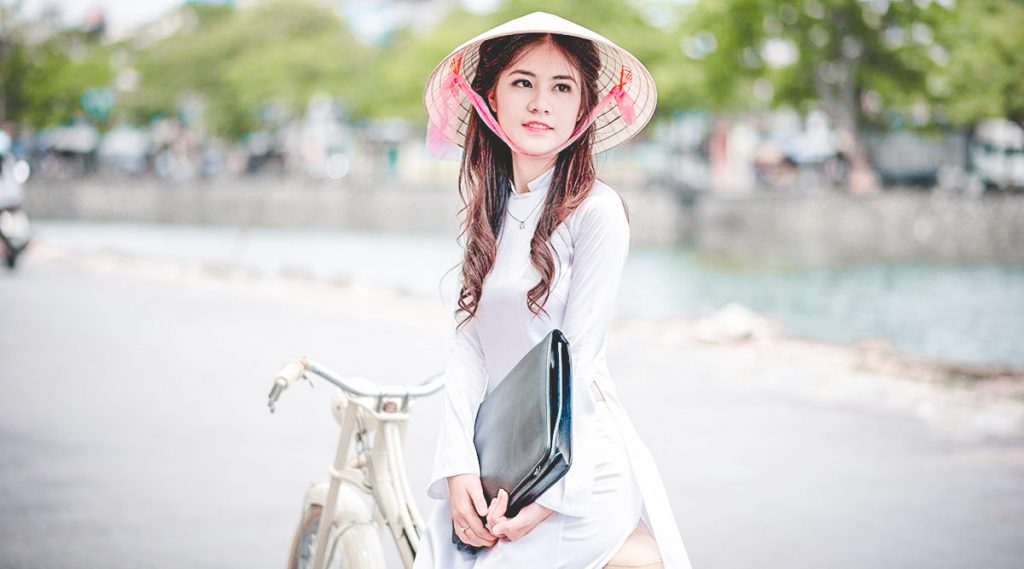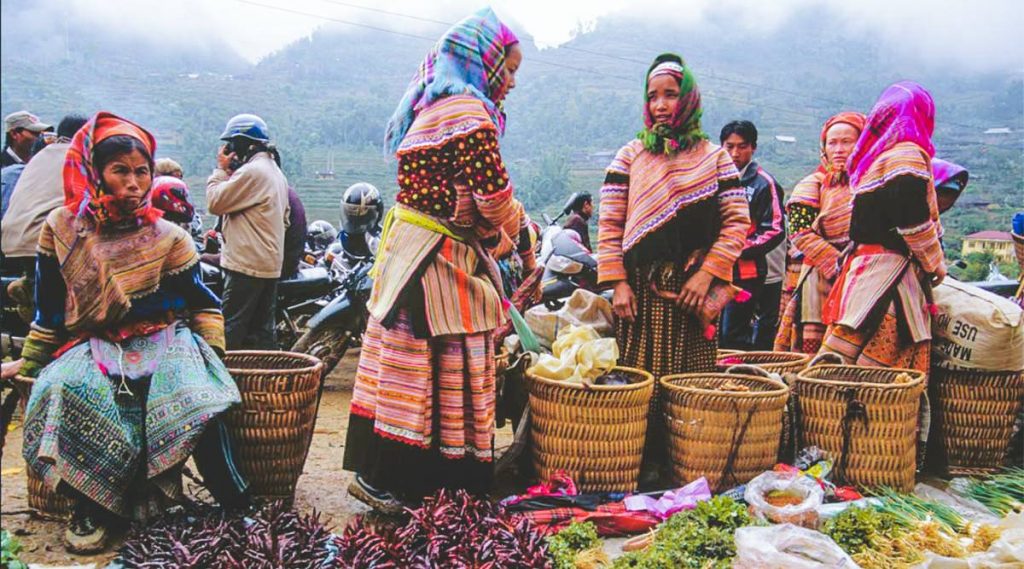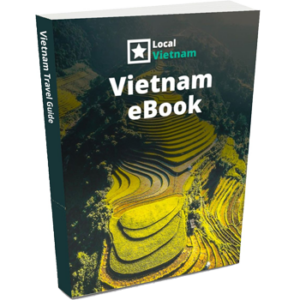Vietnamese are a special mix of cultures, languages and historical backgrounds. The only common denominator among them is that, like in most Southeast Asian countries, they like to smile and are genuinely interested in foreign visitors. In many ways, Vietnam is still a traditional, conservative society, especially for the older generation, which remembers the long, hard years and every inch of the area they fought for. The new generation of Vietnamese is largely unfamiliar with the devastation the country suffered years ago. For them, Vietnam is very different: a place to succeed and to ignore the staid structures of the Communists.

The Vietnamese people
Vietnamese culture and civilisation are deeply influenced by the Chinese, who occupy the country for 1000 years and whose culture deeply penetrates Vietnamese society. History has of course influenced the mix of Vietnamese minorities. The steady expansion to the south in search of arable land first absorbed the Kingdom of Champa and later the eastern size of the Khmer Empire; today both the Chams and the Khmers are large minorities.
The gap between the north and the south
You still notice differences between the people in north and the people in south Vietnam. In the south people are much more progressive and more liberal, while in the north they are much more conservative. For a tourist it therefore often feels more authentic and a stronger culture in the north and in South Vietnam it feels more like the “West”. Southerners think that the northern people take themselves too seriously and do not know how to have fun. Northern thinking of southerners when superficial, light-hearted and obsessed with business. These can be caricatures, but they shed light on the real differences between north and south that extend beyond the (very different) regional dialects.
Climate also plays a role. Life is easier in the south, where the fertile Mekong Delta has three rice crops a year. The north has a long winter of gray skies, drizzle, fog and cool wind.
Remember that the north has also lived with communism for more than half a century, while the south has been with the Americans for more than two decades.
Family
In Vietnam, the status of the family is more important than the salary. The reputation of a family commands respect and opens doors. An extended family is important for the Vietnamese and that includes second or third cousins, the kind of family you might not even realize you have in the Netherlands. The extended family comes together in times of trouble and times of joy, celebrating festivals and successes, grieving deaths or disappointments. This is a source of power for many of the older generations.
Minorities
Vietnam has a large number of ethnic groups. Most inhabitants belong to the Viet, the ethnic Vietnamese who make up 88% of the population. Vietnam has 53 ethnic minority groups (around 14 million people). Most live in North Vietnam and live in the lush mountain landscapes along the border of China and Laos. Some groups have lived in Vietnam for millennia, while the Hmong have emigrated from China to the south in recent centuries. Each has its own language, customs, clothing fashion and spiritual beliefs.

The government has long encouraged hill tribes to go to lower areas for rice, tea and coffee farming, with incentives such as subsidized irrigation, better education and health care. But the long history of independence of the hill tribes keeps many away from the lowlands.
These are some of the most important minority groups in Vietnam:
Tay (population 1.6 million) Live at low altitudes between Hanoi and the Chinese border. They closely adhere to Vietnamese beliefs in Buddhism, Confucianism and Taoism, but many also worship geniuses and local spirits. Tay literature and art are famous throughout Vietnam.
Thai: A large group (1.5 million inhabitants) originating in South China settled along the fertile river beds between Hoa Binh and Muong Lay. Villages consist of thatched houses that are built on bamboo poles. The Thai minority is usually categorized by color: red, black and white. Black Thai women wear brightly colored blouses and headwear.
Muong: Mainly concentrated in Hoa Binh province, the male-dominated Muong (1.4 million inhabitants) live in small hamlets in houses on stilts and are known for their folk literature, poems and music (performed with gongs, drums, flutes) and string of violin).
Hmong: Around a million Hmong are scattered across the distant northern mountains. Most are animists who cultivate dry rice and breed animals. Every Hmong group – black, white, red, green and flower – has its own dress code.
Nung: This tribe (800,000 inhabitants) lives in small villages in the northeastern provinces; their culture combines ancestral worship and have a talent for handicrafts.
Jarai: These people (350,000) from the south-central highlands still practice animistic rituals, respecting their ancestors and nature through a yang (genius). The cemeteries of Jarai are extensive, including carved totem-like images of the deceased.
Sedang: The 150,000 Sedang of the south-central highlands do not bear family names, and it is said that there is complete gender equality.

